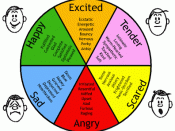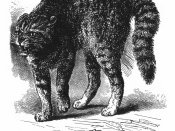Julia Katsman FIQWS 10008 and 10108: Literature & Psychoanalysis Section FQ23 10/07/2014
The Consequences of Suppression: Why it's Not the Best Idea Sigmund Freud theorizes that the suppression of powerful emotions can lead to hysterical symptoms. What this means is: when one doesn't discharge his or her powerful emotions, and instead tries to keep them inside, his or her suppressed emotions may manifest into actual symptoms. Freud's concept of suppression can be used to analyze Charlotte Gilman's "The Yellow Wallpaper." Supporting Freud's claim, suppressing one's powerful emotions can lead to hysterical symptoms in a variety of forms, as portrayed in "The Yellow Wallpaper." The narrator's suppressed emotions about her illness and lack of say in her marriage cause a change of sense of self in her, leading to several phases in the narrator's sense of identity over time, such as: a tentative and obedient wife, outspoken and obsessive, and finally, the woman behind the yellow wallpaper.
In the first phase of the narrator's sense of identity, she is a tentative and obedient wife to John, a physician. In the beginning of "The Yellow Wallpaper," the narrator describes moving into a colonial mansion rented out for three months in order for her to have isolation. This idea of isolation is John's decision, as he thinks the best treatment for her sickness is the "rest cure." The rest cure, developed by physician Weir Mitchell, was a method in that time period-thought to be effective by physicians-that involved the patient lying in bed for the majority of the day in isolation, while everything was done for that patient. As was the usual case in that time period, physicians didn't believe that hysteria was a serious illness because they knew hardly anything about it. According to Freud,


